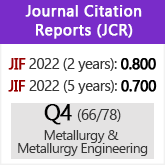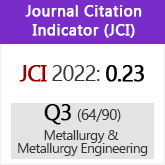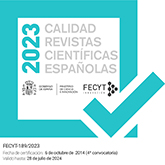Coke, char and organic waste behaviour in the blast furnace with high injection rate
DOI:
https://doi.org/10.3989/revmetalm.2003.v39.i5.349Keywords:
Blast furnace, Coke, hydrocarbons, Degradation, Tuyere injection, Auxiliary hydrocarbonsAbstract
Blast furnace operation with low coke rate, high amount of auxiliary hydrocarbons and use of nut coke causes a change in coke quality requirements. In particular, not burned in the raceway residues of injected substances (char and ash) can influence the coke behaviour. Therefore combustion efficiency of various organic wastes with and without pulverized coal injection (PCI) and coal char has been investigated under the raceway simulation conditions. Mixing of various substances improves their combustion efficiency. Study on coke gasification by carbon dioxide in the presence of char showed that with the increase of char concentration, coke strength reduction becomes smaller. The reactivity of char with CO2 is higher than that of coke. Therefore char is consumed preferentially. In presence of injected char, total pore volume in coke and its wear resistance were increased. Coke reactivity and microstructure in the presence of various kinds of ash has been studied. Many ash spheres were observed on the surface of coke matrix and its size was dependent on ash properties.
Downloads
Download data is not yet available.
Downloads
Published
2003-10-30
How to Cite
Gudenau, H. W., Senk, D., Fukada, K., Babich, A., Froehling, C., García, L. L., Formoso, A., Alguacil, F. J., & Cores, A. (2003). Coke, char and organic waste behaviour in the blast furnace with high injection rate. Revista De Metalurgia, 39(5), 367–377. https://doi.org/10.3989/revmetalm.2003.v39.i5.349
Issue
Section
Articles
License
Copyright (c) 2003 Consejo Superior de Investigaciones Científicas (CSIC)

This work is licensed under a Creative Commons Attribution 4.0 International License.
© CSIC. Manuscripts published in both the printed and online versions of this Journal are the property of Consejo Superior de Investigaciones Científicas, and quoting this source is a requirement for any partial or full reproduction.All contents of this electronic edition, except where otherwise noted, are distributed under a “Creative Commons Attribution 4.0 International” (CC BY 4.0) License. You may read here the basic information and the legal text of the license. The indication of the CC BY 4.0 License must be expressly stated in this way when necessary.
Self-archiving in repositories, personal webpages or similar, of any version other than the published by the Editor, is not allowed.

















